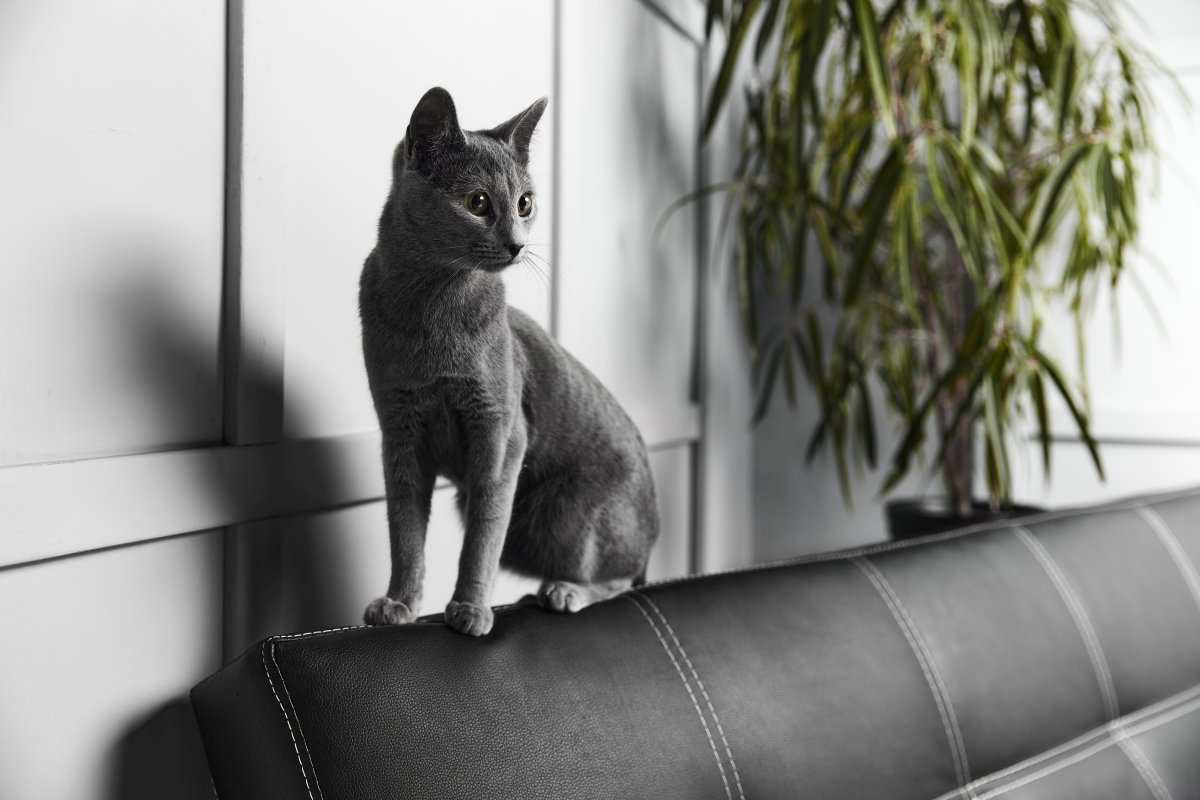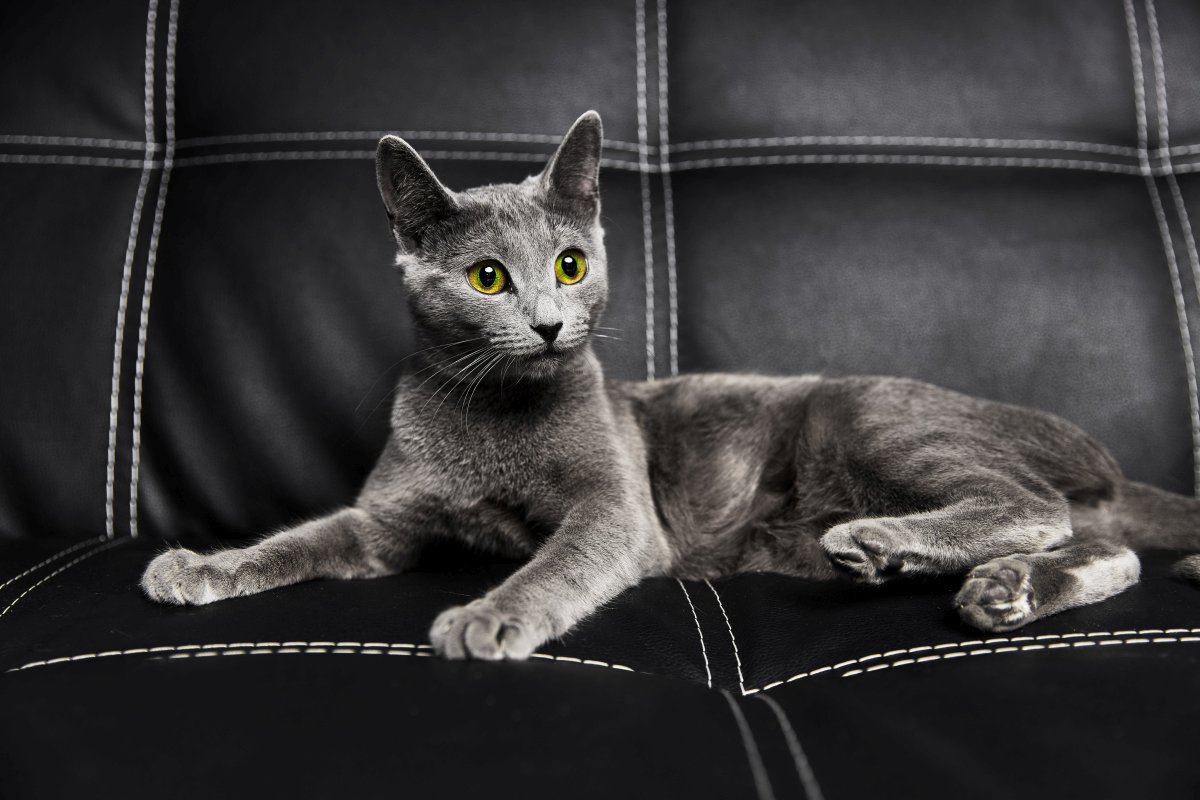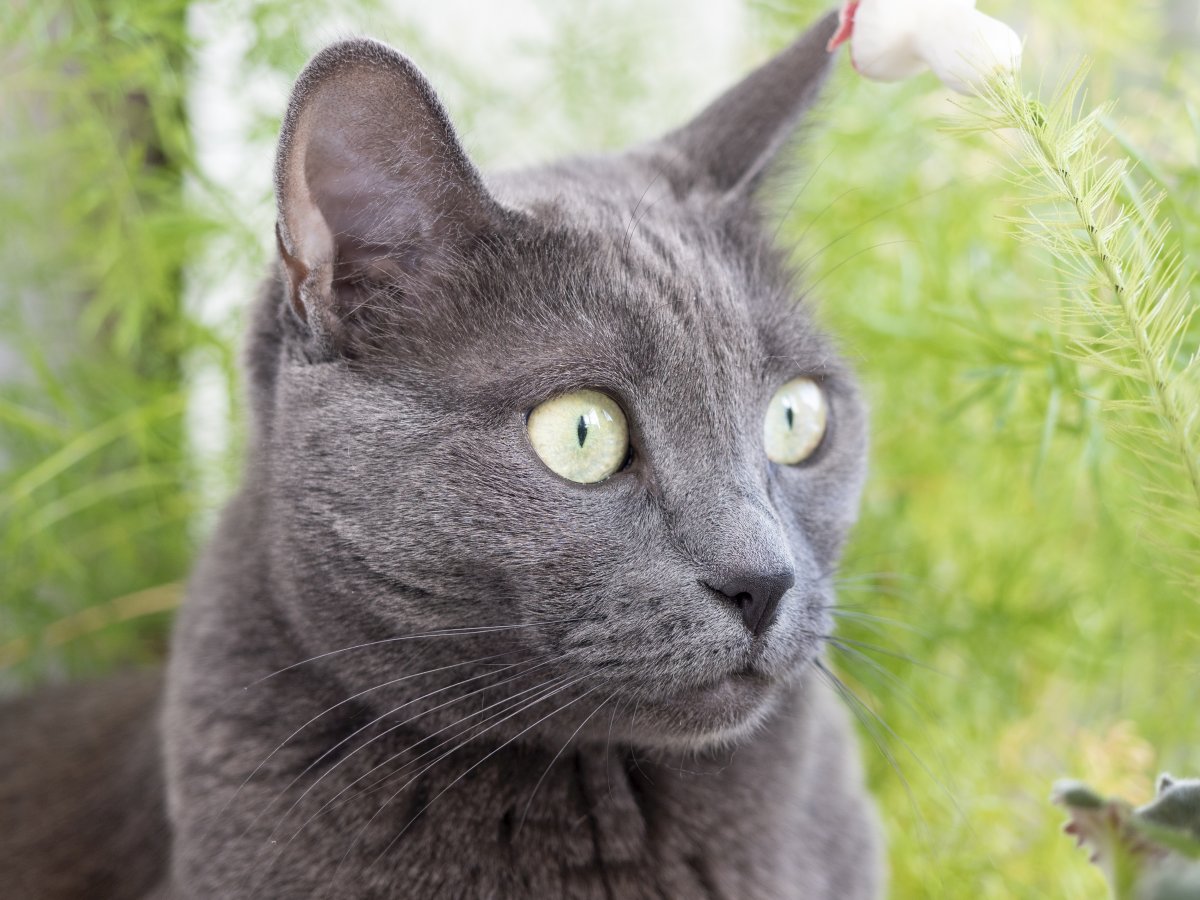Russian Blue cats are famous for their natural beauty. Are you intrigued by these majestic-looking, sleek cats? Are you thinking of adopting a couple of Russian Blue cats? If you are, our guide can be a useful starting point to give you some of the basics about this breed.
This unique feline breed is often considered an exotic pet, but we would not suggest getting a pet based solely on looks. You should know more about the nature and characteristics of any feline before making them a part of your household, and it is an important decision after all!
Basic Facts about the Russian Blue Cat
Russian Blue cats are also referred to as Foreign Blues, and it is their beautiful green eyes make them stand out. These eyes are prominent from even a long distance away and are so deep and inquisitive; you could get lost in them! However, the most distinctive characteristic of Russian Blue cats is their thick, grey coat. The color of their fur can be anything from silver to a deep, slate grey.
The shiny fur of the Blues is so smooth, and it appears to be radiating light when they stand directly under a light source. Some of the most famous Russian Blue cats have a shape with a wedge shape. However, some cats within this breed have a rounder, chubbier face too.
The average weight of the Russian Blue cat can go up to 15 pounds, making it a healthy, strong feline. Moreover, they can also live up to be 20 years old, so you can expect to hang around for a while.
Origins of the Russian Blue Cat
Hardly anyone knows the origin of Russian Blue cats, and this is because this breed has not been created artificially by professional breeders. The earliest records indicate that they popped up in the palaces of Russian czars and became their pets, with no real detail of how they were bred in the first place. However, the Russian ruling class took a liking to them and kept them in their homes.
Around the 1860s, we read that Russian sailors brought the Russian Blue cats on their ships, and this is because these felines were believed to bring good luck with them. Due to this exposure, Russian Blue cats got to travel the world, and this is how the breed was introduced in certain European countries.
They made their first appearance in London in 1875 in a cat show and took the world by surprise, mainly because of their beauty. From then till the 1940s, this breed enjoyed popularity, but after the Second World War, their numbers started to decline. However, thanks to a few cat enthusiasts, the Russian blue cats were successfully bred, mostly with Siamese cats, causing the breed to survive.
How much grooming do they need?

If you own Russian Blue cats, their grooming is not a very hard task. These cats have a shiny, thick coat of fur. They do not shed a lot, so that is good news since it means less cleaning up and a lower chance of triggered cat-related allergies. However, we suggest brushing their fur gently almost 2 to 3 times a week if you want to keep up its lustrous appearance!
How is their nature?
Russian blue cats are pretty communicative and talkative. This means you will hear them meowing quite often, so you do not need to worry. They like to have the attention of the family they are living with. You will also find them ready to play and engage in activities most of the time. This is why we suggest that you buy or make many toys for your Russian Blue cats. At times, you will not be able to keep up with the energy of the agile cats, so you need to have toys on standby that can give them something to stay occupied with.
Do they get along well with children and other pets?
Firstly, let’s examine whether Russian Blue cats get along well with children. You might be interested in knowing that these cats were often kept in the rooms of newborn babies to chase away evil spirits! Even if you do not believe in that myth, Russian blue kittens and cats are great if your household has children. These cats are calm and playful and are sure to become your child’s best friend. They are great companions for little ones and can easily spend hours playing with them.
Now, let’s talk about whether Russian Blue cats get along with other cats. This is an important concern if you have a multi-cat household. Well, we have a bit of good news for you since Russian Blue cats generally get along very well with other cats! These cats are friendly and pleasant, and having other feline companions with them makes them feel good.
However, as the owner of multiple cats, you need to ensure that your Russian Blue cats are introduced to the other cats in your house properly. If Russian Blue cats get off with other cats on the wrong foot, it may be hard to make amends later on.
Are there any common health issues?
Generally speaking, Russian blue cats are a generally healthy breed. Since they were not bred artificially, they are used to staying in the wild and surviving independently. As they grow older, you can expect them to have certain urinary tract issues, but other than that, there are no other prevalent issues that should cause concern.
Fun facts about them
Russian Blue cats are often said to have a Mona Lisa smile, and their slightly upturned mouth gives them a mysterious expression that is as hard to read as that of the heroine in the French painting. Moreover, this cat was said to have to come to Europe on the Arkangel ship from Russia, causing this breed to be called Archangel Blue by some! After reading this guide, we hope that you will want to buy any Russian blue kittens for sale that you come across. This beautiful, fun-loving, and friendly breed will make a good addition to any family.







